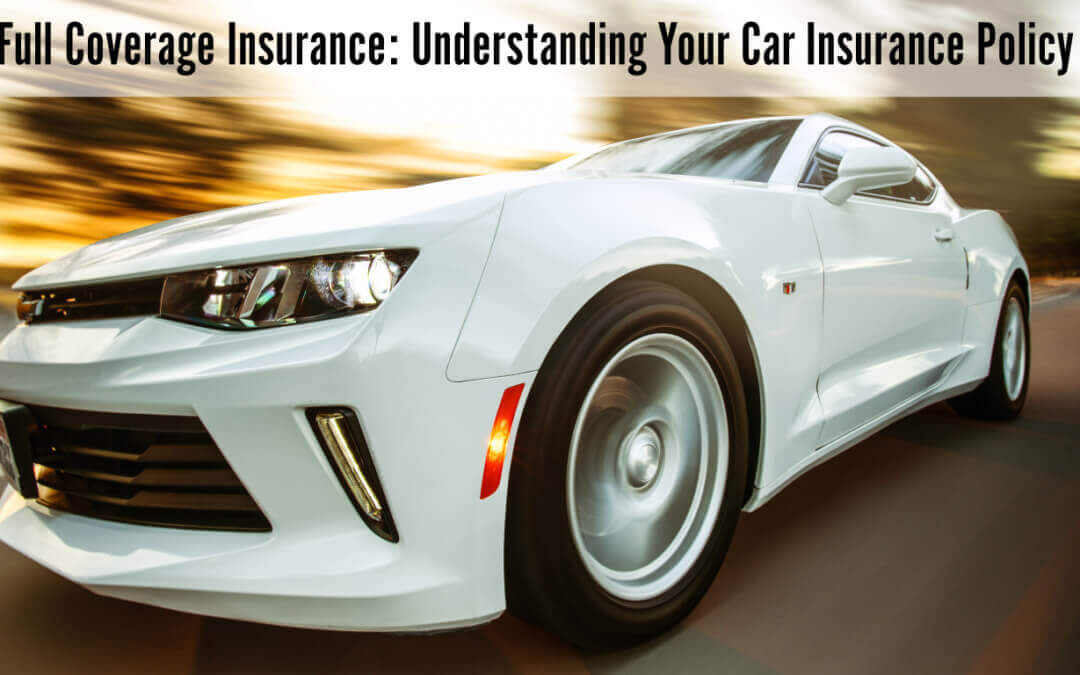Do you know what the term Full Coverage means? Are you protected if you are hit from an uninsured driver? Can you answer these questions? If not it may be time for you to take a look at your car insurance policy and see if it is actually doing what you think.
Chances are you spend thousands a year for car insurance. Your representative probably uses terms such as Bodily Injury, Comprehensive, PIP, UM coverage and Full Coverage. If you don’t know what one or more of these actually mean you may be leaving yourself vulnerable.
Car Insurance Part 1: Protecting Everyone Else
Florida is a no-fault state. This means that your insurance will pay the PIP coverage regardless of fault. (click here to find out more about what no-fault means to you). However, depending on who is at-fault, you may be responsible for the medical bills, lost wages and other damages that results from an accident you cause.
Florida Law states you must have $10,000 in PIP coverage, the minimum insurance legally allowed. Additionally, PIP coverage is considered “Full Coverage” in the state of Florida. It classifies as “full coverage” because it provides the necessary coverage required by law. However, this is far from the coverage most people need, and would be better referred to as minimum coverage.
Most insurance brokers work on commission. Some agents offer the lowest price, simply hoping to win the sale. Unfortunately these low prices also tend to mean low coverage. Understanding your policy can be tricky if you do not understand terms such as No-fault, Full coverage, Bodily Injury, and UM. It’s not uncommon for a salesman to sell a policy that leaves someone vulnerable in the event of an accident.
What About Collision and Comprehensive?
Other than PIP, the only other insurance you may be required to carry is Collision and Comprehensive Insurance. These two are not mandated by state law, but rather the banks and auto financing companies. If you are leasing or financing a vehicle the lender will require this coverage to protect the value of the car in the event of an accident. These coverages pay for the repair of the vehicle in the event of an accident.
Bodily Injury
Bodily injury coverage is the primary portion of your auto policy covering injuries to another person if you are at fault. The Bodily injury coverage is written with two numbers representing the limits of coverage. These limits often start at $10k/$20k but can go up to north of 300k/500k. The first number in the policy is the maximum per person benefit. The second number is the total amount of coverage per accident. For a $10k/$20k policy limit if there are 4 people involved, the most any one person can receive is $10,000 and the most all 4 of them can receive is $20,000 from the insurance company.
It is important to know what coverages you have. The less coverage you have the higher probability the other party may require additional funds for their damages. Having insufficient coverage could open yourself up to a law suit to cover the other persons injuries.
Car Insurance Part 2: UM Coverage Protecting You
Protecting yourself is important. The last thing anyone wants is to lose a home because because of a car accident. The likelihood that you will one time in your life be in a car accident that is not your fault is high. With millions of uninsured drivers, it is important to make sure you purchase insurance that can help you if the other person’s insurance (or lack of) is not enough to pay you for your injuries.
UM Coverage
UM Coverage is the portion of your car insurance that pays YOU if you are hurt in an accident that is not your fault and the other person does not have enough insurance or are uninsured. A lot of people do not have UM Coverage. When spending thousands a year on insurance to pay for damages you may cause to others, why not spend some on yourself?
The amount of UM coverage you can purchase is directly tied to your Bodily Injury insurance. You may only purchase up to the same coverage as the bodily injury. For example, if you have 25k/50k Bodily injury, you may only purchase up to 25k/50k in UM coverage. You do not need to purchase the same limits as Bodily Injury, but you cannot purchase more.
UM Insurance comes into play in two instances.
- When the other drive is Uninsured ;or
- The at fault driver is Underinsured (does not have enough coverage to cover your injuries).
Having this extra insurance money to dip into can be the difference between getting the surgery you need and being empty handed.
Conclusion
Both of these situation happen more than many would like to think. With 1 in 8 drivers uninsured in America the odds are fairly high. Moreover, a lot of people think that because UM coverage is not required that they do not need it. This can be a scary situation when you are severely hurt in a car crash with an uninsured driver only to realize you have no coverage besides your $10,000 in PIP. PIP coverage can run out quickly. You spend all of this money on insurance, wouldn’t it be nice if there were some funds to help you in your time of need?
Each person’s situation is different. A college student with nothing to their name does not need the same insurance as a millionaire with 2 houses and thousands of dollars in the bank. Understanding your personal situation and what you could stand to lose if someone were to sue you can help determine what insurance is right for you.
